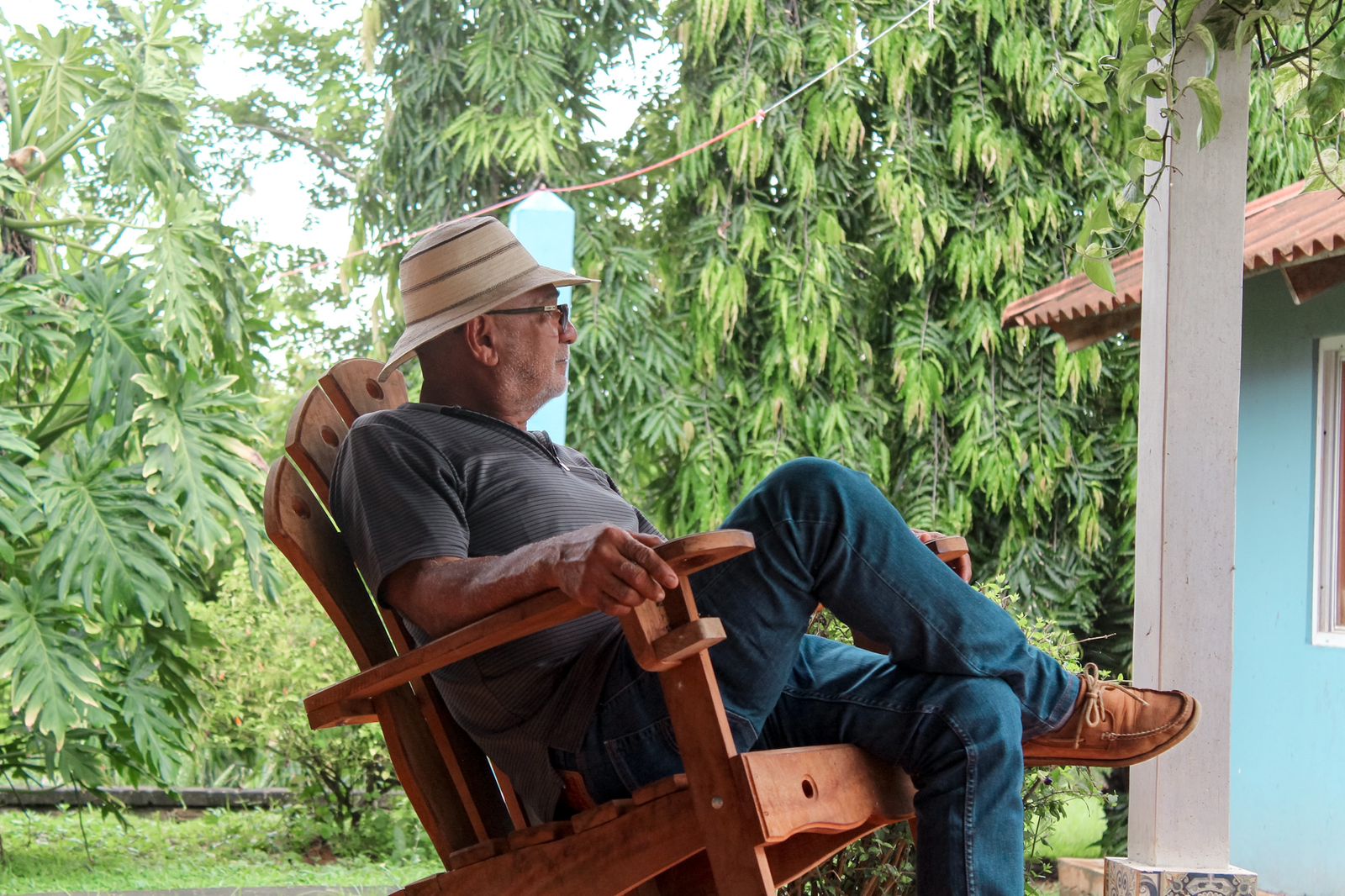This edition has as a guest in our Flavors segment who does not refer to himself as a chef, but rather as a person who believed in tourism and a gastronomic venture. However, for The Visitor – El Visitante is a great Chef in his own right and dimension, since in the 90s he undertook a country-style gastronomic and commercial adventure called Los Papassitos. Many people driving to the interior have once stopped to eat there to enjoy its culinary delights. A place that was nicknamed the “Fonda con Cache” (traditional restaurant with style). Today Chef Joel Dominguez owns the Hotel Paraiso del Mar at Playa El Estero in Las Tablas District (the land where he was born and raised), and Chef of this hotel’s restaurant, Chef Dominguez spend time with The Visitor – El Visitante to talk about gastronomy, entrepreneurship and the future that is coming for tourism.

You are a Chef with a long career and great credibility for your talent, at what point is Panamanian gastronomy as a truly tourist product?
“I must be very sincere in my answer, there is a bit of a divorce between the tourism authorities and the tourism entrepreneurs of Panama, more accentuated after the pandemic where the already existing offer in Panama struggles with a two-year closure in business and an economic crisis, and that we live on a daily basis. Today the tourism sector is the hardest hit in the Panamanian economy. It is already a challenge to undertake in the sector, to keep operating is more a matter of honor, therefore, the gastronomic offer struggles to maintain itself, but it is not easy to sustain quality standards with the high cost of produce and in a contracted economy.
I have seen some new chefs present themselves with excellent dishes in international competitions and have brought several accolades to Panama, and it is amazing.
Another point of which we echo is the evolution of the consumption of junk and low-cost food and the technology that helps this consumption, it is seen in all the networks as making dishes just by opening a bag of chips. There is a large offer of this food that competes with those already established in Panama throughout the country. Gastronomy must be very open and evolve, of course, but it is detrimental for good food.”

Before you had one of the restaurants like Los Papassitos, what led you to return to Los Santos?
“In 2014, I made the decision due to security circumstances in the area, to move to Las Tablas with a new project of a Hotel on the seashore and by 2015, the new Hotel Paraiso Del Mar opened. With restaurant and a water park, thinking of leaving something good in my homeland and starting to lend my knowledge and experiences to locals and foreigners. Thus, we undertook a new challenge, learning to manage leisure tourism and gastronomy traditionally fused with seafood.
It has been some years of very good experience, satisfaction; although in 2018 a slight tourist slump began. The project contemplated a combination of hotel-type rooms and an apartment tower on the beach, a very convenient area for this due to its proximity to Las Tablas.
Already on March 15, 2020, the Pandemic crisis begins that to date we are still living trying to recover what was lost, thank God we are still working for the good of this region.”

You are a native from Las Tablas, how has the region evolved in both local and imported gastronomy?
“Yes, I am a native of Las Tablas, an eminently livestock and agricultural region, but with a great Andalusian influence, we are partygoers for excellence. I am convinced that this region, which is the cradle of traditions, customs and attractions such as beaches, festive events all year round, will become a center of tourism development in the coming years, we just need real interest on the part of the authorities to create true regulations that help organize sustainable tourism. The new generations will have that opportunity and see this region in full tourist development.”
What legacy are you looking to leave in gastronomy and how is it helping to make the Panama experience more rewarding for Visitors?
“In the gastronomic aspect, the region has a great dependence on a very varied food marked by dates and times throughout the year, the knowledge to make these foods are passed from one generation to another, such is my case that I learned from a very young age to make the classic meals from my grandmother and mother.
I learned to handle the native spices of the region and cook truly native dishes from yesteryear. I can mention that many dishes are no longer put on the table because they require a lot of work to prepare. I can give you examples: A true pumpkin (melon) stew with ripe plantains and smoked pork, a chicken or pork tamale, a good sancocho, marrow cane with yellow plantain angu. Likewise, the cow leg tripe with tortilla for a delicious breakfast. Food authentically from the region.
These meals have become special menus, because they take preparation and a lot of work and hours to cook these delicious foods. The new generations know little about this, we must leave a legacy to our future generations and it is the education and teaching of our roots in everything related to our gastronomy of yesteryear that could become a mainstay for our tourism and a fundamental piece of this. Learning to assemble a healthy meal and that it serves so that new entrepreneurs can present a native gastronomy of the region.”

If you were given the opportunity to create a project where gastronomy, history and Panamanian traditions are mixed, what project would you like to carry out?
“I think that for me it would be of special interest to carry out a rescue of our gastronomy in our region; It would be with the local governments that are interested in improving the existing ones that would increase our tourism and sustainable competitiveness. As far as internal and international tourism is concerned, we have a crude diamond, it would only be a matter of polishing it. Economically we have a very viable province and we can achieve many standards to increase the economy of our region. To strengthen national tourism, which is currently not very solid compared to other neighboring destinations. We must all work hand in hand so that national tourism continues to grow and rise from the current situation.”


